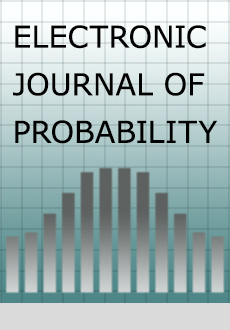Abstract
We show that planar Bargmann-Fock percolation is noise sensitive under the Ornstein-Ulhenbeck process. The proof is based on the randomized algorithm approach introduced by Schramm and Steif ([30]) and gives quantitative polynomial bounds on the noise sensitivity of crossing events for Bargmann-Fock.
A rather counter-intuitive consequence is as follows. Let $F$ be a Bargmann-Fock Gaussian field in $\mathbb {R}^{3}$ and consider two horizontal planes $P_{1},P_{2}$ at small distance $\varepsilon $ from each other. Even though $F$ is a.s. analytic, the above noise sensitivity statement implies that the full restriction of $F$ to $P_{1}$ (i.e. $F_{| P_{1}}$) gives almost no information on the percolation configuration induced by $F_{|P_{2}}$.
As an application of this noise sensitivity analysis, we provide a Schramm-Steif based proof that the near-critical window of level line percolation around $\ell _{c}=0$ is polynomially small. This new approach extends earlier sharp threshold results to a larger family of planar Gaussian fields.
Citation
Christophe Garban. Hugo Vanneuville. "Bargmann-Fock percolation is noise sensitive." Electron. J. Probab. 25 1 - 20, 2020. https://doi.org/10.1214/20-EJP491
Information





